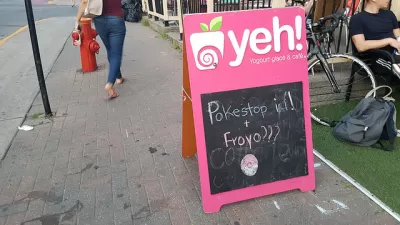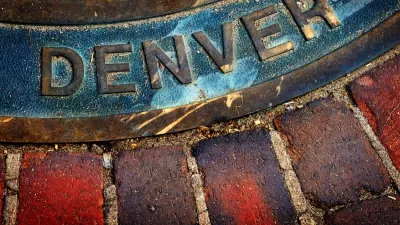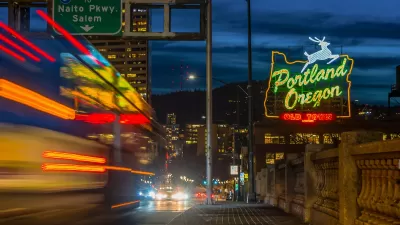Chuck Wolfe traces the comeback of sandwich board signage in cities, explains how associated regulations work, and offers reasons why such signage should be carefully fostered.
Referencing sandwich board signs, Wolfe notes that "rethinking allowed uses in city rights-of-way can change the look and feel of streets in unexpected fashion" as "both fascinating symptoms and emblems of the changing city".
Referencing regulatory approaches in Aspen and Seattle, he offers five criteria for why sandwich boards should stay:
1. Homespun simplicity sells.
2. Artisans need work and small businesses need affordable ways to shine.
3. Well done signs bring character to neighborhood.
4. Sandwich boards can supplement permitted facade signage and increase the prominence of a small business.
5. Perhaps most important, like other forms of pop-up urbanism, removal is an option.
Wolfe concludes: "[W]e should foster and encourage quick fixes that innovate. If done right, aren't sandwich boards one example that can literally show the way?"
Thanks to Chuck Wolfe
FULL STORY: The Sandwich Board Makes a Comeback

Study: Maui’s Plan to Convert Vacation Rentals to Long-Term Housing Could Cause Nearly $1 Billion Economic Loss
The plan would reduce visitor accommodation by 25,% resulting in 1,900 jobs lost.

North Texas Transit Leaders Tout Benefits of TOD for Growing Region
At a summit focused on transit-oriented development, policymakers discussed how North Texas’ expanded light rail system can serve as a tool for economic growth.

Why Should We Subsidize Public Transportation?
Many public transit agencies face financial stress due to rising costs, declining fare revenue, and declining subsidies. Transit advocates must provide a strong business case for increasing public transit funding.

How to Make US Trains Faster
Changes to boarding platforms and a switch to electric trains could improve U.S. passenger rail service without the added cost of high-speed rail.

Columbia’s Revitalized ‘Loop’ Is a Hub for Local Entrepreneurs
A focus on small businesses is helping a commercial corridor in Columbia, Missouri thrive.

Invasive Insect Threatens Minnesota’s Ash Forests
The Emerald Ash Borer is a rapidly spreading invasive pest threatening Minnesota’s ash trees, and homeowners are encouraged to plant diverse replacement species, avoid moving ash firewood, and monitor for signs of infestation.
Urban Design for Planners 1: Software Tools
This six-course series explores essential urban design concepts using open source software and equips planners with the tools they need to participate fully in the urban design process.
Planning for Universal Design
Learn the tools for implementing Universal Design in planning regulations.
City of Santa Clarita
Ascent Environmental
Institute for Housing and Urban Development Studies (IHS)
City of Grandview
Harvard GSD Executive Education
Toledo-Lucas County Plan Commissions
Salt Lake City
NYU Wagner Graduate School of Public Service





























